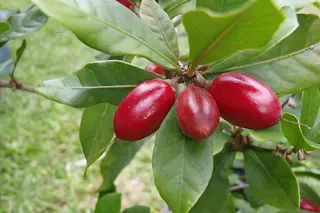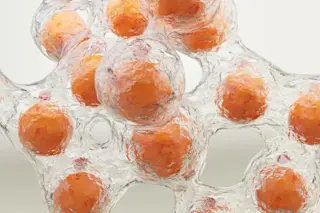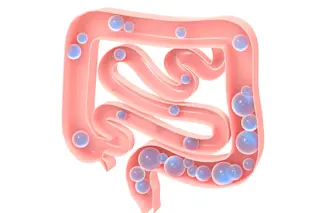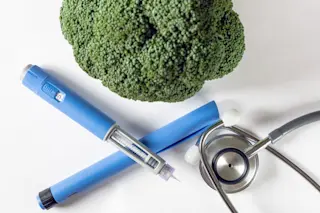Miracle Berries (Wikimedia Commons) Imagine eating a lemon and puckering to incredibly sour...no wait, incrediblysweet citrus syrup. Then you try some tart goat cheese, but to your surprise, it tastes like sugary frosting. An underripe pineapple? Better than candy. Salt and vinegar chips? Dessert! This fantastical taste-changing sensation is the real-life effect of a West African fruit called Synsepalum dulcificum (Richardella Dulcifica), or the “miracle berry”, which physically alters taste receptors and causes sour foods to taste sweet. How does this work? The secret is a protein found in miracle berries called miraculin.
Miraculin Protein (Wikimedia Commons) When a miracle berry is eaten, its molecules attach to the thousands of taste receptor cells located on taste buds lining the mouth, tongue, throat, and esophagus. Humans have at least five different kinds of taste receptors to detect five basic tastes: sweet, salty, sour, bitter, and umami. (Note that evidence in the last decade suggests that there may be additional taste receptors for lipids [1] – which may explain our natural affinity for fatty foods!) Miraculin, in particular, binds directly to the sweet-sensing taste receptor known as hT1R2-hT1R3. The earliest scheme of miraculin-hT1R2-hT1R3 binding was based on a pH-dependent conformational change of the sweet receptor-protein complex. In this model, miraculin binds somewhere near the sweet receptor site (so there is no sweet taste at first), but at a lower pH (in sour or acidic environments), the receptor changes its shape so that miraculin can bind directly on the sweet receptor site and elicits a sweet taste [2]. That's how miraculin causes a lemon, which creates a sour, acidic environment in your mouth, to taste so sweet!
More recent studies have found additional evidence that miraculin actually starts off directly attached to sweet receptor hT1R2-hT1R3 in neutral pH and activates it in the same place in an acidic environment. Experiments have shown that sweet receptors bound with miraculin are most responsive in acidic pH (4.8-6.5), but in general, the more sour environments lead to a greater intensity of sweet taste sensation [2]. In neutral pH (when miraculin is not activating the sweet receptors), miraculin actually has another effect: it blocks other sweeteners such as aspartame, sucrose, and saccharin, and other sweetness-inducing proteins like thaumatic and brazzein, from attaching to the hT1R2-hT1R3 receptor. Basically, miraculin claims the sweet receptor site for itself so that it can reactivate the site, allowing the magical sensations of sweetness to last for up to an hour.
Degrace-Passilly P, Besnard P (2012) CD36 and taste of fat. Curr Opin Clin Nutr Metab Care 15: 107–111.
Koizumi A., et al. (2011) Human sweet taste receptor mediates acid-induced sweetness of miraculin. Proc. Natl. Acad. Sci. U.S.A. 108: 16819–16824.
Yamamoto C, et al. (2006) Cortical representation of taste-modifying action of miracle fruit in humans. Neuroimage 33:1145-1151.
Wilken M, Satiroff B (2012) Pilot study of “miracle fruit” to improve food palatability for patients receiving chemotherapy. Clinical Journal of Oncology Nursing 16:E173-E177.
Eunice Liu is studying Neuroscience and Linguistics at UCLA. She attributes her love of food science to an obsession with watching bread rise in the oven. Read more by Eunice Liu

About the author:














